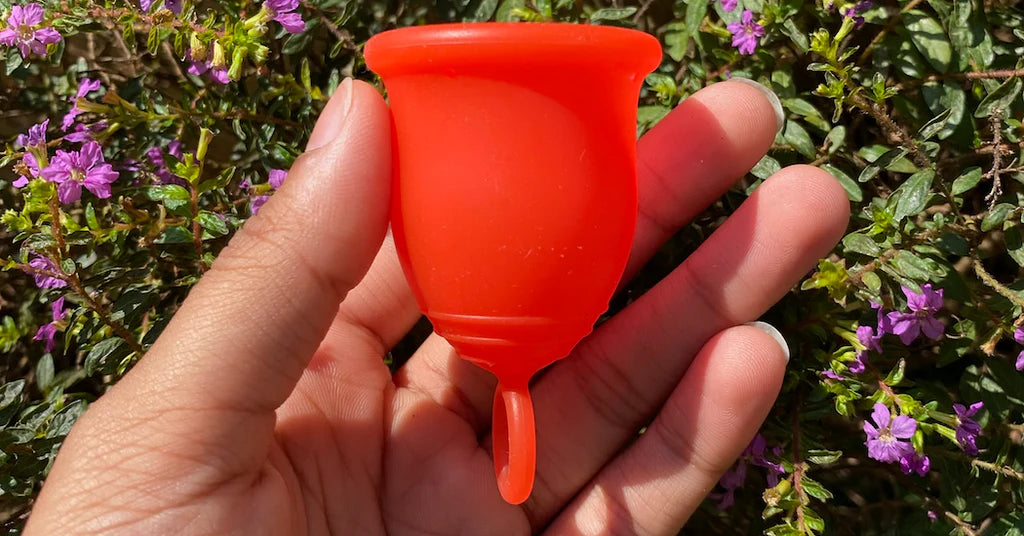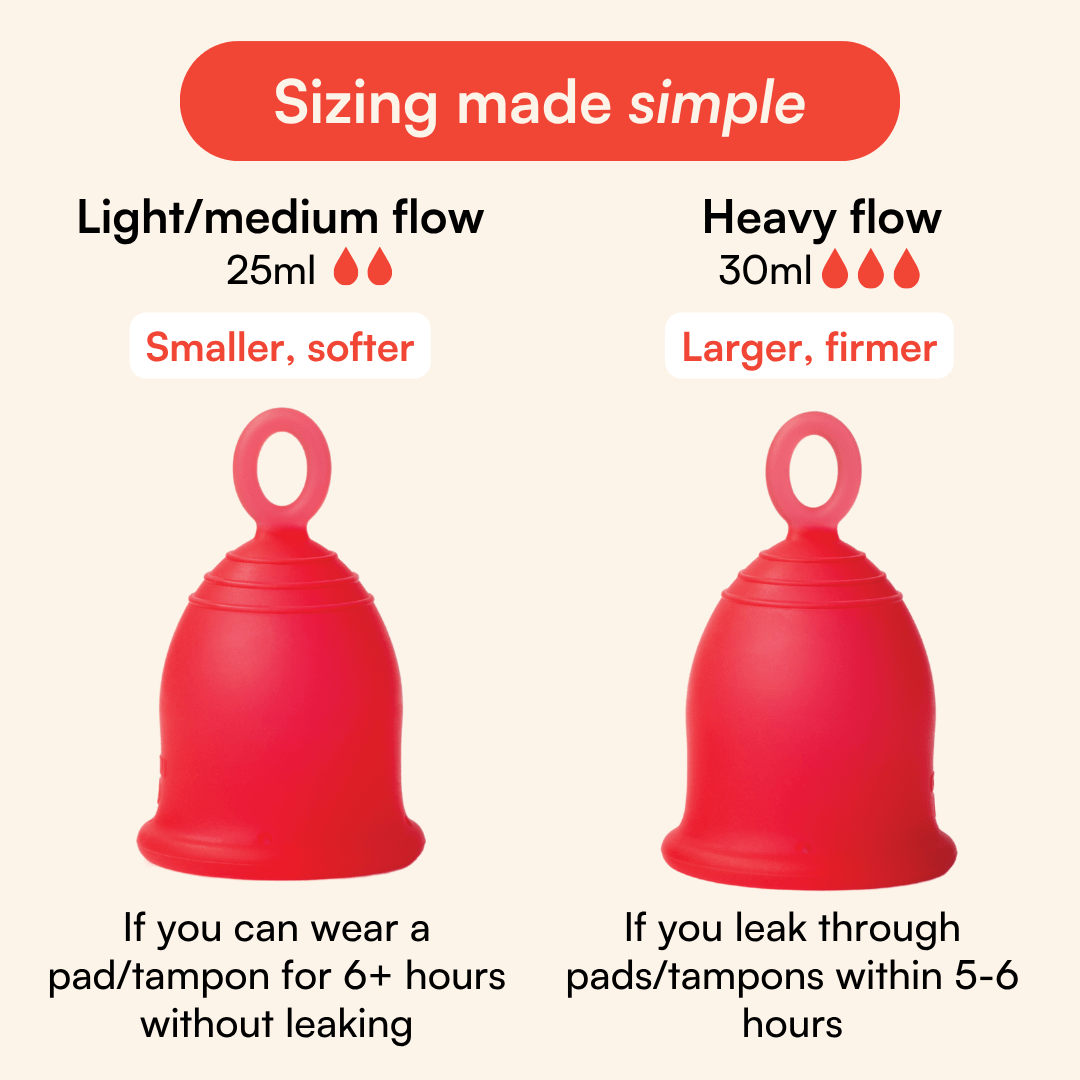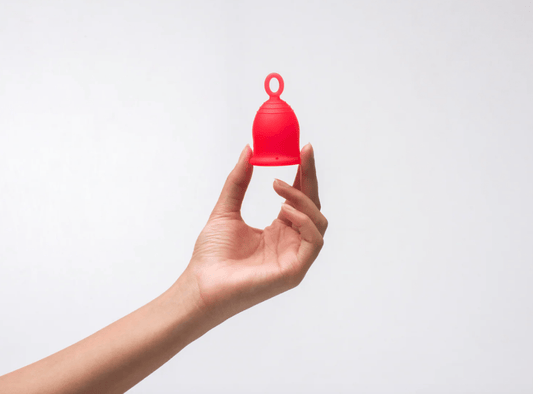

Have you noticed that your period flow looks and feels different on certain days?
For many of us, it can vary from experiencing light flow and short periods to much heavier and longer periods.
But have you ever noticed the color of your period flow changing? And wondered, does the color of your period blood matter? And what do different colors of period blood mean?
It is completely normal for period blood color to change a little bit during a period cycle. For example, your period flow might be bright red at the beginning of your cycle and then switch to a brownish tone towards the end of it.
In fact, the color of your period blood color indicates a lot about your menstrual and reproductive health. So let’s learn about different period blood colors and what they mean!
What is period flow?
Your period flow is a mixture of blood and tissues, which makes up your endometrium lining - a lining that grows around your uterus every month in preparation for a potential pregnancy.
Once your body realises that the lining is no longer needed, it leaves the uterus and comes out through your vaginal canal. So this is how your period blood is made and how your period blood comes out!
If you’d like to learn more about how the menstrual cycle works, you can read this detailed blog about what happens during your menstrual cycle.


What causes period blood to change color?
Your period discharge can come in different colors and consistencies.
The color can vary from bright red to burgundy and brown, and the consistency can range from being very thin and watery to thick and clumpy.
The changes in color of blood during your period happen because of oxidation. When period flow comes in contact with oxygen, it is likely to get darker.
While usual flow changes across different shades of red is a healthy period blood color, if you start noticing your period blood to appear orange, green, grey, or black in color then that might indicate a menstrual or reproductive health condition.
So lets learn what the color of your period blood says about your health.
Bright red period flow
You’re most likely to see the bright red color of period blood at the start of your period.
This simply means that your flow travels fairly quickly from your uterus to your vaginal canal, and is a completely normal period blood color during menstruation.
If you are experiencing sharp period cramps, that means that in that moment your uterus has contracted to shed the endometrium lining, leading to a sudden gush of heavy flow, which is usually bright red in color.
If you experience bright red flow all throughout your periods, this indicates that your flow is consistent and your body is actively working to remove the unneeded endometrial lining. Your flow has been coming straight out from the uterus and has not been sitting in the uterus (where it might come into contact with oxygen and turn into a dark red) – so the bright color persists.


Dark red period flow
Dark red period blood is another common period flow color.
Your period flow will appear dark red because it sat inside your uterus for a long time, causing it to come into contact with oxygen, which darkens blood.
The longer the blood lining stays inside the uterus after being shed, the darker it will get. This generally happens towards the end of your period, when your flow might be slower.
Dark red is a completely healthy and normal period blood color. The color simply suggests slower flow, which is common towards the end of your period!
Brown period flow
You may experience brown period flow during your light flow days, which can happen towards the beginning and end of your period.
Period blood that is brown or light brown in color will look similar to a muddy or rusty shade, and is usually thick and clotty.
Brown flow is also commonly seen during postpartum bleeding, which happens after a child’s delivery. Please note that postpartum bleeding is different from menstrual bleeding.
In some cases, brown period blood can be an early sign of pregnancy. If you notice brown period flow over the course of a few months, it’s good to consult your doctor.


Pink period flow
Have you ever wondered what should period blood color be at the start of your period?
Well, pink period flow is a sign of your period approaching, and in fact, it’s quite common for your blood to be pink at the start and end of your period.
This is a sign of light bleeding and happens because your vaginal mucus (cervical fluid), which is whitish/transparent in color, mixes with red blood, creating pink.
If you experience pink flow throughout your periods or during other phases of your menstrual cycle, it can be a sign of iron-deficiency anaemia. In that case, it’s good to get some medical attention so you can learn how to best manage your condition.
Orange period flow
The orange period flow usually occurs when your period is about to end. A day or two of this towards the end of your period is completely normal, as blood can turn orange when oxygenated.
You might also experience orange flow in the form of spotting during the ovulation phase of your menstrual cycle, which happens due to your oestrogen levels falling.
If you notice that you’re experiencing orange flow throughout your period, along with symptoms such as itchiness and burning, this can be a sign of an infection and requires medical attention.
Black period flow
If you’ve ever noticed your period flow being black in colour, you may have wondered, What does black period blood mean?
Similar to experiencing dark red period flow, black period flow occurs when your lining has been heavily oxygenated inside your uterus due to extremely slow flow.
In other cases, your period flow can turn black when there’s some sort of blockage in your vagina. This restricts your lining from flowing down, and the blood is given time to oxygenate in your uterus, making it appear black.
In rare cases, black period blood can indicate an infection. This is usually accompanied by a discomforting smell, in which case you should get immediate medical attention.
Green or grey period flow
If you notice green or grey color blood during your period, you should seek medical help immediately.
The green and the grey tinges are signs of infections, either vaginal or sexually transmitted diseases.
In this case, you might also experience other symptoms, including vaginal itchiness, difficulty urinating, and excessive and smelly discharge.
But please don't worry! These infections can be fully cured with early medical attention and proper monitoring by a medical professional.
Please note, don’t use a menstrual cup while you are healing from an infection. You can switch back to your cup once your doctor has given the green light!


Frequently asked questions
What color is my period blood supposed to be?
Your period flow can change color throughout your period cycle, and it is completely normal.
Typically, your period blood should be a shade of red - whether it’s light or dark doesn't matter as both are signs of healthy menstruation!
Can the period flow color change with age?
Not necessarily!
While period blood changes color during a menstrual cycle, there’s no pattern that it will change with age.
As you get older, your period might start getting lighter in flow, and it is also common to experience brown period flow after a pregnancy.
Can menstrual cups change the color of period blood?
No, they cannot change the color of your period flow.
However, using a cup is a great way to monitor your flow over time, as they collect rather than absorb your period flow.
The Asan cup comes in two sizes and is based on your period flow, so no matter how light or heavy your period is, you’ll be able to collect it and track your period color.
Ready to shop for the easiest menstrual cup to use? Shop now.


Asan Menstrual Cup
Share








More Posts
View all-

Top 5 features for period underwear
This guide breaks down the five most important features to look for including fabric, fit, and safety certifications, so you can find a pair that’s comfortable, leak-proof, and long-lasting.
Top 5 features for period underwear
This guide breaks down the five most important features to look for including fabric, fit, and safety certifications, so you can find a pair that’s comfortable, leak-proof, and long-lasting.
-

-

The hidden environmental cost of disposable period products
Understand the hidden environmental costs of single-use sanitary products.
The hidden environmental cost of disposable period products
Understand the hidden environmental costs of single-use sanitary products.
-

The rise of social ventures
In the UK, mission-led businesses are on the rise, growing from just 5,300 in 2003 to over 130,000 today. In this article for Maddyness, Asan’s founder Ira Guha reflects on her...
The rise of social ventures
In the UK, mission-led businesses are on the rise, growing from just 5,300 in 2003 to over 130,000 today. In this article for Maddyness, Asan’s founder Ira Guha reflects on her...




